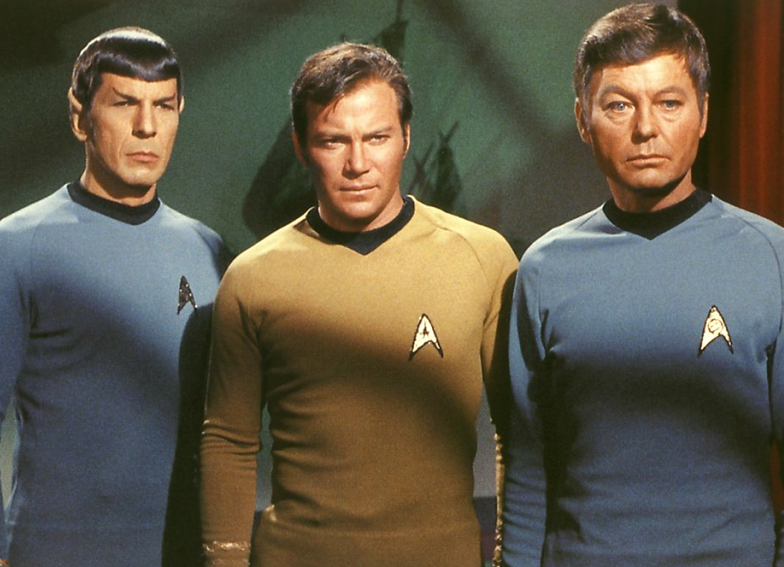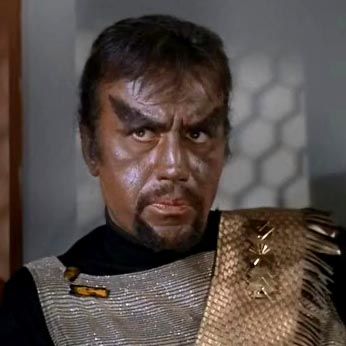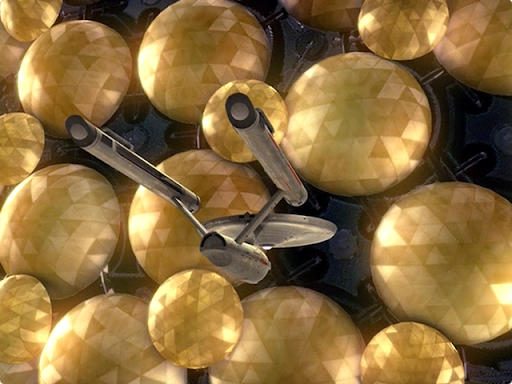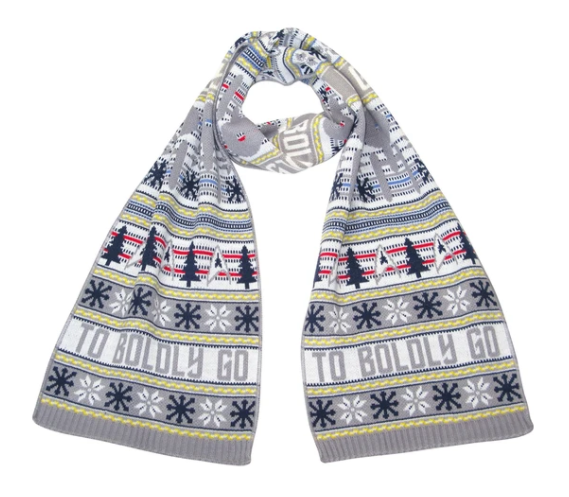In 1966, Gene Roddenberry created a new television show that he pitched to television executives as “Wagon Train amongst the stars.” This referred to a very popular show at the time set in the old west, where settlers travelled across a brand new America having adventures and encountering various dangers.

But this new show, called Star Trek, would be set about 300 years in the future and feature the crew of the U.S.S. Enterprise travelling through our galaxy. The Constitution Class Enterprise was one of 13 ships and the flagship of Starfleet – the military division of The United Federation of Planets.
The show would take place during its five year journey of exploration (2265 – 2270.) The Enterprise’s mission was to seek out new worlds, new civilizations – and to boldly go where no man had gone before.
Star Trek‘s Captain
Commanding the five year mission was Captain James Tiberius Kirk (played by William Shatner) – a decorated officer who was, in his early 30s, the youngest to make captain at that point in Starfleet history. Kirk had nerves of steel, a keen strategic mind, an excellent poker face and the habit of never giving up and never giving in. Kirk could handle himself in a fight better than anyone. As a captain, he was tough but fair, and the only lady in his life seemed to be the Enterprise.
Far out in space
During those early Starfleet years, with only 13 heavy cruisers patrolling the galaxy, a ship could be weeks away from the nearest Federation outpost or authority. Captains such as Kirk were given a lot of latitude when it came to making decisions regarding Starfleet policies, especially involving First Contact scenarios or visiting more primitive species.
Starfleet created the Prime Directive, which stated that no representative of the Federation or Starfleet could interfere with the natural growth or development of any civilization that hadn’t already developed light speed or warp travel.
Captain Kirk had to carefully balance the needs of such civilizations while interpreting Starfleet’s rules and regulations. The situations were seldom black and white. Like any good commander, he had advisors he knew he could turn to in these situations. He also trusted them with his life. These were Mr. Spock and Dr. McCoy.

Trusted Allies
Lieutenant commander Spock (Leonard Nimoy) served under Captain Kirk as first officer and science officer of Enterprise, having served under the ship’s previous captain, Christopher Pike. Although his mother was human, Spock’s father was Vulcan, a race that embraces logic, suppresses emotion, and possesses razor sharp mental faculties. Thus, Spock was invaluable in almost any situation. Kirk and Spock eventually became the closest of friends.
When seeking input from his officers, Spock counselled logic to Kirk, while McCoy brought emotion to the table.
Leonard McCoy (Deforest Kelley) was the ship’s brilliant chief medical officer – a self-confessed plain old country doctor, and also a close friend to the captain. He served as a confidant and bartender when Kirk needed to talk.
In assessing a solution to a problem, McCoy presented options based on the heart, while Spock offered logic, and that’s why they usually vehemently disagreed about everything. Kirk usually found a smart middle ground to what they were suggesting, and made up his own mind.
It’s worth noting that as many times as McCoy and Spock would argue – and they did so a lot – they also grew to be the very best of friends who’d give their lives for each other.
Other notable members of the crew include Lt. Cmdr. Montgomery Scott (James Doohan), the chief engineer and flat out miracle worker; Lt. Hikaru Sulu (George Takei), helmsman, botanist and ancient weapons aficionado; Lt. Nyota Uhura (Nichelle Nichols), communications officer and singer; and Ensign Pavel Chekov (Walter Koenig), navigator.

During that era of Starfleet, when visiting a new world, the captain usually led the landing parties. This led to almost every conceivable scenario when meeting new civilizations. Kirk usually had to fly by the seat of his pants.
Star Trek enemies
Although Kirk and his crew dealt with gods, monsters, tyrants, and all manner of alien beings, their most consistent adversaries were the Klingons and the Romulan Star Empire.

The Klingons (militaristic warlords during this era) were conquering many worlds in a bloody fashion as they expanded their empire. Enterprise ran into them several times during Star Trek‘s three seasons (1966 – 1969.) While the Federation and the Klingon empire weren’t technically at war, they were usually on the brink.

The Romulans, meanwhile, were a more duplicitous, stealth-driven opponent, being the first to engineer cloaking devices for their ships which allowed them to hide in plain sight. Enterprise encountered them in ‘Balance of Terror’ – a tactical engagement between a Romulan Warbird with its wily commander and Enterprise, forcing Kirk to try and outmanoeuvre his invisible foe in the dead of space. Before this battle, no one in the Federation had laid eyes on a Romulan before, with the last known contact having occurred during the Earth-Romulan war a century before.
Recommended episodes for viewing
‘The Corbomite Maneuver’ (Season One, episode 10): The crew encounters a huge ship, hundreds of times the size and power of Enterprise. The alien’s intentions are a mystery, until it starts to threaten Enterprise. We see Kirk operating in the dark, outgunned and over-powered, yet managing to win (he doesn’t believe in the no-win scenario.) It’s a prime Kirk episode and we see what he’s capable of in the centre chair.

‘The Galileo Seven’ (Season One, episode 16): Mr. Spock leads an away mission by shuttlecraft to investigate a star system. Complications arise and the shuttle crash-lands on a hostile planet, losing all contact with Enterprise. The giant, savage inhabitants of the planet start to attack. This is a great character study that focuses on the dynamic of Spock and McCoy’s relationship. It also surrounds Spock with emotional humans, and he gets to witness how they act when they’re under attack and out of options.
‘City of the Edge of Forever’ (Season One, episode 28): Very loosely based on a Harlan Ellison script, this is a time travel love story wrapped in an epic tale with an interesting twist. Shatner gives one of his finest performances. The highlights of this gem are Kirk and Spock’s interactions with prohibition era Earth, and the lovely Joan Collins as Edith Keeler. Today, it stands as one of the best Star Trek episodes ever made.

Star Trek‘s legacy
Although The Original Series only lasted three seasons (79 episodes, plus a pilot) it grew in popularity over the years in reruns, spawning an animated series, countless toys and merchandise, seven more live action TV series, and 14 motion pictures over the last half century.
Are you interested in checking out Star Trek: The Original Series? In addition to being shown on Netflix and CBS All Access, you can find all three seasons on Blu-ray and DVD on Amazon.
Shop on Amazon!

Star Trek: The Original Series Christmas scarf. Order now from the Lovarzi shop!
Latest posts…
- The biggest Doctor Who announcements
- The top 5 Doctor Who logos
- The sky is falling! 4 times people predicted Doctor Who’s doom
- Have some missing Doctor Who episodes been found?
- The Rani originally caused the Eighth Doctor’s regeneration


Leave a Reply